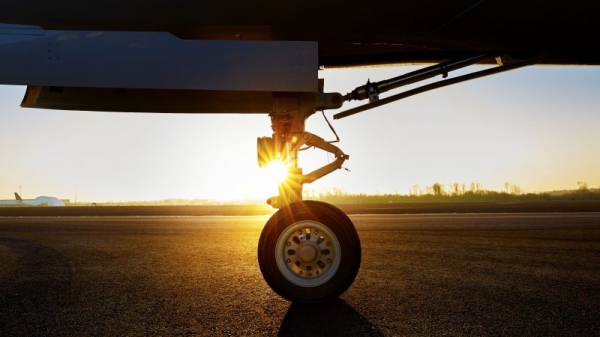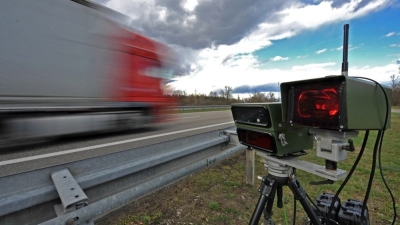Business Aviation’s Bold Plan for Decarbonising the Skies

Business aviation has long been breaking boundaries to fly safer, further, and more efficiently, while providing well-paying, high-skilled jobs, connecting remote and underserved locations to financial and political capitals, and facilitating economic activity around the world, writes Kurt Edwards.
We know we must respond to the global climate crisis. Our industry continues to think in revolutionary ways, and a big part of that is with a bold, comprehensive plan for reaching net-zero carbon emissions by 2050.
The work toward this goal will be a central focus as the industry meets in Geneva later this month at the 2023 European Business Aviation Convention & Exhibition. There, thousands of companies and visionaries worldwide will discuss sustainability initiatives and technologies accelerating the flight to a zero-emission future. EBACE2023 will generate ideas and actions that are the catalyst for the future of aviation.
This work is the culmination of a year-long effort to become ever more sustainable. The global business aviation community in 2021 committed to meeting net-zero carbon emissions by 2050 through a combination of measures and in close partnership with stakeholders, particularly governments and key sectors of the air transport industry.
This ambitious commitment was built on a long-term climate plan set in 2009 that guided business aviation’s decarbonisation efforts for more than a decade.
Business aviation is comprised of approximately 17,000 operators around the world with an average fleet size of 1.5 aircraft per operator, ranging from small, single-engine piston aircraft to turboprops and intercontinental turbojets, as well as helicopters.
Some people believe these aircraft mostly transport high-net-worth individuals, but in fact, business aviation does much more.
It is essential to the operations of companies and how they serve their customers, enables economic activity in and access to remote and underserved locations, and allows medical and humanitarian missions to reach places that airlines cannot.
Guided by its flight plan, this diverse, diffuse sector is building on its legacy of innovation that takes a holistic approach to decarbonisation – and has been a focus for decades.
Business aviation has pioneered technologies and techniques that have reduced emissions across the entire civil aviation sector, such as winglets, lightweight composite materials, and glass cockpits, allowing for more direct, precise flying.
These advancements have allowed business aviation to become 40 per cent more efficient over the past four decades, and it will continue to deliver emissions reductions as these and other new technologies are deployed for decades.
Our industry is aggressively pursuing next-generation technologies.
Zero-emission propulsion, such as battery-powered, electric hybrid, and hydrogen-based aircraft, will be demonstrated and incorporated first into the smaller aircraft that comprise business aviation. In just a few years, electric vertical takeoff and landing and other advanced air mobility aircraft will further reduce our sector’s carbon footprint.
As these advancements take hold in our sector, they will be deployed to commercial aviation, and the benefits will be immense.
Importantly, business aviation’s plan places significant emphasis on sustainable aviation fuel (SAF). SAF, which is made using renewable sources like disposed food, algae, and municipal waste, can reduce lifecycle greenhouse gas emissions by as much as 80% and can be used in current aircraft without costly retrofitting.
Today, there is more SAF availability, production, and supply than ever before, powering more flights daily. SAF production tripled in 2022 and is expected to grow by more than 400% by 2025. We still have much work to do.
The production and uptake of SAF must be scaled significantly for all of aviation to meet its decarbonisation goal by 2050. The business aviation sector has helped spur this technology through advocacy and calling on governments to enact policies that encourage expanded production, distribution, and use of SAF.
Some of our ability to reach net-zero carbon emissions by 2050 will depend on improved infrastructure to fly more efficiently. Modernised air navigation systems could reduce emissions by up to 10 per cent through more direct operations in some regions.
For example, implementing the Single European Sky is a major opportunity to contribute to air transport’s decarbonisation.
Policy is also critical. The European Union is in the process of defining what constitutes a green financial investment in aviation as part of its taxonomy for sustainable finance. As these discussions evolve, all parties should be mindful not to harm economic activities, jobs, and underserved regions that our sector is supporting.
Developing new technologies and ever-greener aircraft will require all available resources.
As with many global challenges – and none more than the climate crisis because of its breadth – solutions depend on industry working collaboratively with governments, civil society, and other partners.
We look forward to participating in the Third Conference on Aviation Alternative Fuels, convened by the UN’s International Civil Aviation Organization, later this year. The meeting will be an important opportunity for governments and industry to continue to develop policies that speed the decarbonisation of civil aviation.
The global business aviation community will continue to work with the government, other industry sectors and stakeholders to achieve net-zero carbon emissions by 2050. Grounding business aircraft is not the answer and would have a minimal effect, if any, on global emissions.
This industry is committed to finding solutions to achieve our shared climate goals while continuing to meet our economic, societal-connectivity, specialised, and humanitarian missions.



